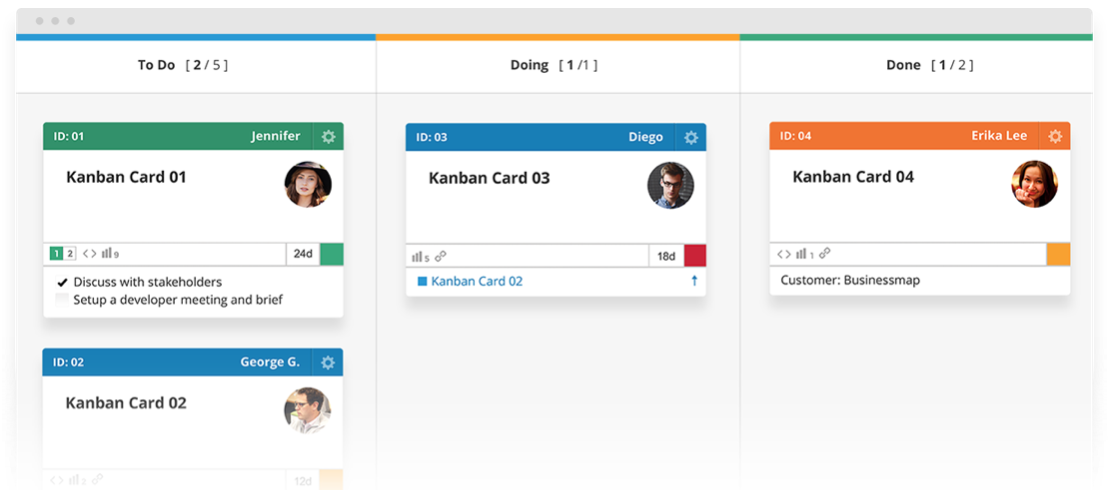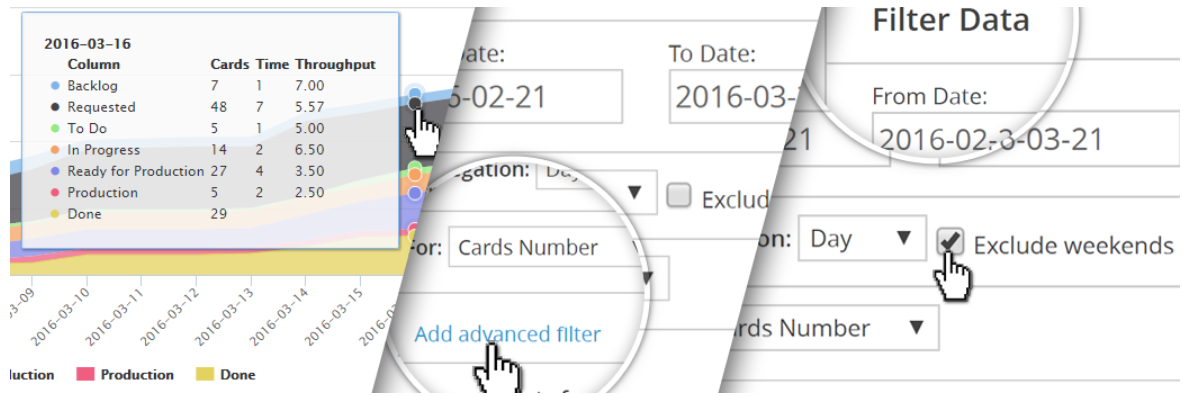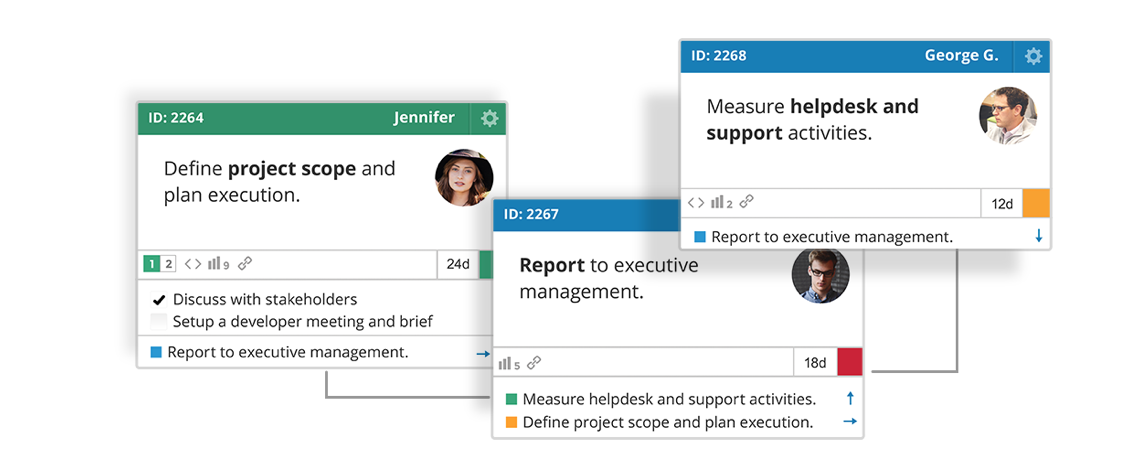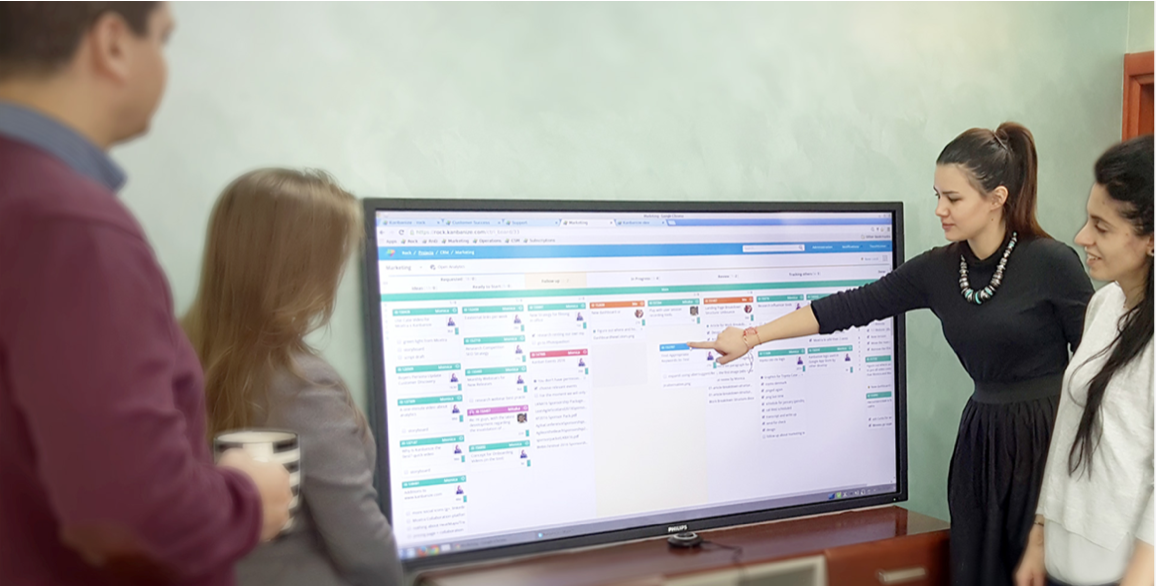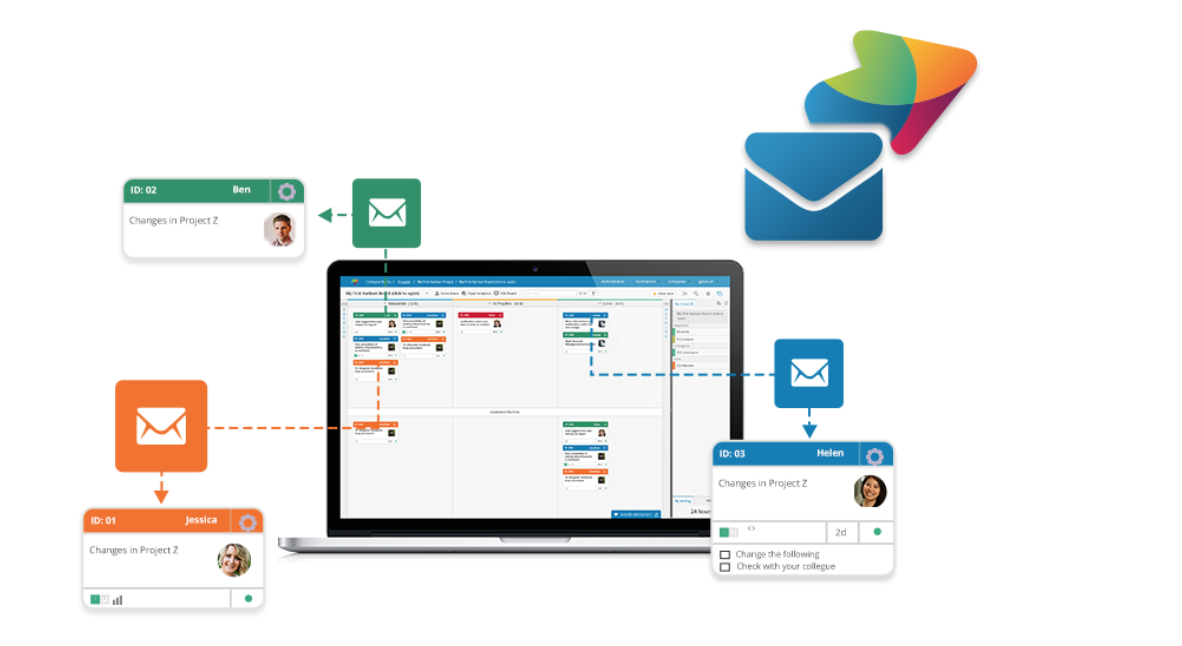Guest post by Monica Georgieff from Kanbanize.
The future of product development in software was born at the factories of Toyota in Aichi. The Kanban method is the reason the Japanese car manufacturer overtook huge titan car companies from all over the world and now sells the most units per year out of all of them. Formerly only applied to manufacturing, the Kanban method they pioneered is now a large part of how Lean product development teams in the software industry are optimizing their process on a day-to-day basis. Kanbanize has built a tool to help product development and IT ops teams practice the Kanban method in their work in order to continuously improve and reach their goals. Find out the ways Kanban and Kanbanize make efficiency happen.
Maintains visibility on all levels
In the Kanban method, the visual board that hosts all work items in the form of cards encourages an environment of transparency and visibility within the project team. This form of project mapping has numerous benefits surrounding the way people within the organization interact with each other. Operating a transparent business demonstrates respect for employees and customers alike, eliminates the barriers of communication between the various tiers of the project hierarchy and encourages input, as well as involvement from all members of the team. Promoting access and the regular exchange of information creates communion within the team and helps to address problems faster. It is one of the main responsibilities of the project manager to foster an environment where visibility is not an option, but instead, a necessity.
Promotes accountability within the project team
Assigning sub-systems of tasks to particular individuals within the project team promotes accountability within the organization. Collaborative project management makes use of localized control subsystems as much as it can. The Kanban method believes there can only be one member of the team responsible for the completion of a task. In addition to them, there can be watchers and contributors but only one single assignee. This encourages defined accountability, a common understanding of the full project goals as well as the individual’s adopting of his or her particular role in its execution.
Creates proper feedback loops to remain "in the loop"
Collecting feedback from all levels of the organization is essential to successfully creating anything as a team. If we assume the central database you already have in place has done the job of giving every team member access to the complete information related to a given project, then the next step would be collecting impressions from every member of the team in order to ensure that the project is moving in the right direction and all team input is being treated as priority. You can create built-in feedback loops in your process as well by keeping your amount of work in progress at a given time to a minimum by setting up automatic limits to keep you from overloading yourself and your team members. In Kanban, these are called work in progress limits and are very strictly adhered to, even if they have been set by the team members themselves at the beginning of the project. Analysis of KPIs together can also be considered a feedback loop.
Actively involves all members in collaboration
Collaboration is something that needs to be flexible and intrinsic enough to fit anywhere in your team’s process. Choosing the way we communicate with our collaborators depends on what the situation demands and we should be ready to make optimal use of various media consistently to allow collaboration to become part of the mindset of the entire organization. Multimedia communication is an intrinsic part of the future world of business and, a case can be made that, it is already one of the most important elements of the modern workplace. Users in Kanbanize get comfortable with chat, phone, video call, screen sharing, whiteboards, emails at their disposal.
Nurtures a mindset of discipline and continuous improvement
Contrary to popular belief that frequent meetings are a distraction, hosting brief stand up meetings instead of status meetings during an ongoing process can be absolutely vital to staying on track and are a large part of the Kanban method. Stand up meetings take the waste out of long winded conversations and actually make meetings in general less intimidating and consequently more frequent and functional. This approach can help shift attention to the important things and clear up any details before they become problematic. The epitome of the lean and agile mindset!
Prevents overloading members of your team
Another problem that tends to arise in teams of all sizes is the proper distribution of work. There are many reasons why overloading can occur, but there is no acceptable excuse for it being ignored by those in a position to shift things around and alleviate the situation. It can often be attributed to the miscommunication between project managers and their teams or simply the problem of underestimating the scope of a project. In Kanban, work in progress limits are imposed on individual members on a global level to keep them from getting overloaded. The theory of constraints meant to limit bottlenecks states that “the throughput of any system is determined by one constraint (bottleneck).” In other words, your system is only as efficient as its weakest part. Adding constraints is not only a way to prioritize but also a way to ensure that no member of your team has too much on their plate and the workflow runs smoothly.
Replenish the work queue before it runs out
Certainly, one of the natural and common duties of a product manager is to work on the “To Do” queue replenishment. In other words, the primary task of a PM is to make sure that the team has the right priorities in place, that the work items (tasks, duties, tickets, cards) are well described and that whenever team members have capacity, they will not waste time figuring out what next to do. Depending on the context this may be a full-time job or a one-hour per week task. You should probably spend a couple of days a month figuring out what the highest priority is, how exactly things should work, who you should collaborate with to get quality feedback and plan the approximate milestones.
Introducing a unified online solution
Introducing an online solution that can amalgamate the entire project team’s labours on one accessible platform and help everyone apply Kanban together can be an extremely enriching and informative approach to working together. Software solutions give teams the opportunity to automate parts of their process by applying business rules and to collect detailed analytics from each part of their work.
The right software solution will encourage the Lean principles of the Kanban method within the team through application and creating an environment predisposed to enforcing them for positive results. Check out the list of Top 10 Best Online Kanban Tools for Business.
